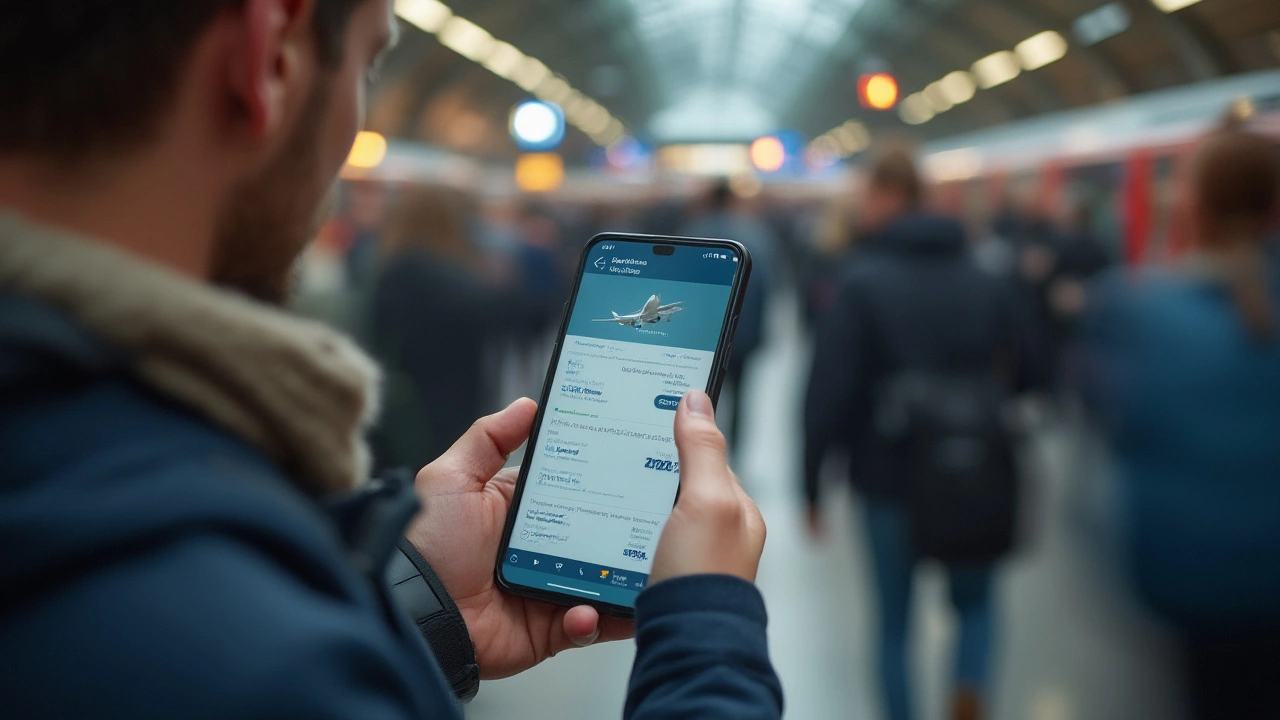You know that feeling when you hesitate to book a plane ticket, wondering if waiting will snag you a cheaper deal? You're not alone—millions do the same anxious dance, monitoring prices and crossing their fingers for a drop. But here's the truth: the price rollercoaster isn’t just luck or magic on the airline’s side. Sometimes waiting helps, sometimes it’s a disaster. Want to know when to hit 'book now' or keep refreshing? The answer isn’t as simple as you’ve heard, and the reality might surprise you.
The Truth Behind Last-Minute Flight Pricing
The biggest myth that refuses to die? That flights always get cheaper closer to your travel date. In the early days of commercial air travel, this kind of last-minute markdown was actually a thing. Airlines would discount unsold seats right before takeoff just to fill the plane and cover costs. But that was decades ago.
In 2025, things couldn’t be more different. Airlines use super smart algorithms—think Wall Street-level math meets your vacation dreams—to set ticket prices. These systems look at everything: season, demand, big events, search trends, and even your browsing history. Does waiting for last-minute bargains work today? Usually not. Data from the U.S. Department of Transportation and fare aggregator Hopper shows that, on average, prices start to creep up about 3-4 weeks before departure, then shoot up dramatically in the last 7-10 days. Last-minute deals do pop up—but mostly for unpopular routes or off-peak times nobody else wants.
Let’s look at some stats. According to an extensive 2024 study by Expedia, travelers who booked domestic flights in the US between 21 and 60 days ahead got the best prices on average—sometimes saving over 20% compared to tickets bought within the final week. And for international trips, the sweet spot was 40 to 60 days out. Most major airlines, like Delta, American, and United, actually raise prices as the plane fills up. The fewer the remaining seats, the more the price jumps. The airlines know some travelers need to fly and will fork out any amount—business travelers or those with emergencies—which is why hanging on for a price drop can backfire big time.
There’s a psychological element, too. Airlines know that people searching last minute are often desperate. Ever heard of “dynamic pricing”? That’s when algorithms push up fares the more you (and others) search the route. You might notice the same seat getting pricier every day you check. It’s not paranoia, it’s profit.

When Waiting (or Acting Fast) Really Pays Off
Here’s the twist: even if waiting usually hikes up prices, there are certain moments when last-minute bargains actually exist. But first, a quick table to break down the average price swings, based on 2024 data from Skyscanner and Hopper:
| Days Before Departure | Average Price Change |
|---|---|
| 150-90 | -5% (slight drop after release) |
| 90-60 | +0% (stable) |
| 60-21 | -10% (best deals) |
| 20-14 | +10% (prices start rising) |
| 13-7 | +18% (steep increase) |
| Less Than 7 | +25% (highest prices) |
So when do those mythical last-minute deals appear? Sometimes, airlines miscalculate demand and end up with unsold seats a day or two before takeoff. Budget carriers and charter airlines are most likely to slash fares at the last minute, especially on mid-week or red-eye flights. These seats usually come with strings attached—no free baggage, weird layovers, or non-refundable tickets. There may also be brief fare wars between airlines, or flash sales to fill planes after unexpected cancellations. But jumping on these requires flexibility... and a dash of luck.
If you’re traveling during peak seasons—summer, holidays, big festivals—banking on last-minute steals is almost always a losing game. Holiday flights, school breaks, and popular business routes tend to get snapped up fast, and prices just climb. The airlines know they can charge more because demand is sky-high. But if you’re flying to a less-visited spot, mid-week, or in the shoulder season (late fall or early spring)—keep an eye out. You might stumble on a deal airlines quietly drop to fill a few empty seats.
Want to boost your chances even more? Sign up for airline newsletters, use incognito mode to avoid price hikes while browsing, and set fare alerts. Tools like Google Flights, Hopper, and Skyscanner will ping you when prices drop. Flexibility is key—shifting your departure by just a day or two can save you hundreds.

Smart Booking Strategies and Real-Life Tricks
Getting the cheapest ticket takes more than luck. The flight prices you see aren’t random—they’re shaped by how, when, and where you book. Airlines love to keep us guessing, but there are ways to game the system. Here’s what savvy travelers (and a few airline insiders) recommend:
- Book on Tuesdays or Wednesdays: Airlines often release sales early in the week to fill seats, so check in the morning for fresh deals.
- Avoid the weekends: Prices spike on Fridays through Sundays, because that’s when most people have time to browse and buy.
- Be flexible with dates and airports: If you can fly out on a Tuesday or Saturday, or switch to a nearby airport, you’ll often save a bundle.
- Use fare alerts: Apps like Hopper or Google Flights let you track fares. If you see a sudden drop, book quickly—it probably won’t last long.
- Clear those cookies or browse incognito: Price jumps after repeat searches aren’t a myth. Airlines and travel sites track your activity and sometimes nudge prices upwards—especially if you’re hesitating to book.
- Mix and match airlines: Buying two one-ways from different carriers, or adding a layover, can sometimes save more than booking a round trip.
- Set a price threshold: Know your budget, and when fares dip below that, don’t wait—good deals do disappear, especially on busy routes.
- Leverage points and airline rewards: If you collect miles or have credit card points, last-minute searches can pay off with “award” seats when cash prices are high.
- Check discount carriers directly: Some low-cost airlines (like Southwest in the US or Ryanair in Europe) don’t show up on big search engines. Visit their sites to find exclusive deals.
Your route matters a lot, too. For a quick trip from LA to Vegas, last-minute might actually work, since flights run all day and airlines like to fill seats. Heading to Europe for Christmas? You’re better off booking months out. Every destination has its own rhythm—get to know the trends for your routes using historical price data available on major aggregator sites.
Lastly, don’t ignore “hidden city” fares (where you book beyond your actual destination and skip the last leg). It’s a bit cheeky—and some airlines hate it—but it can cut costs on routes with weird price logic. Just know the risks: no checked bags, and you can’t do this round-trip. Apps like Skiplagged specialize in hunting these loopholes.
If you need a quick cheat sheet: for domestic flights in the US, booking 1-2 months ahead is usually the sweet spot. For international, 2-5 months out is safer. After that, you’re likely to watch prices march up until takeoff—especially if you don’t have the freedom to pivot your dates or destination.
The next time you’re sweating over that stubbornly high fare, remember: airlines aren’t playing a random game. With a mix of planning, digital tools, and a bit of risk-taking, you can still land a deal that doesn’t ruin your travel budget. There’s no single hack, but being aware of how pricing works puts you ahead of most travelers scrambling for a seat.
